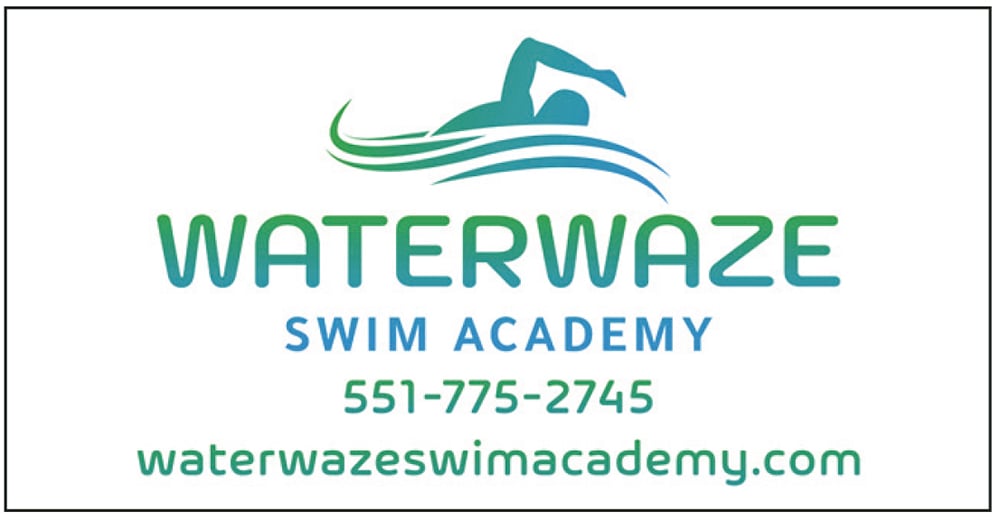
One of the benefits of living in Rockland County is how accessible pools are. Many of us have friends or neighbors who are willing to share. Maybe you’re not lucky enough to know the ‘right people’, but still get invited to pool parties or go to the bungalow colony for the weekend. Practically every camp offers swimming on a daily basis, and many have seasonal trips to waterparks. Swimming is a great activity that provides fun for the whole family. It offers numerous benefits, including sensory input, muscle tone and strengthening, and helps with focus. The problem is that drowning is the sixth leading cause of death worldwide for children aged 5-14 years. Statistically speaking, if you both own a gun and have a swimming pool in the backyard, the swimming pool is about 100 times more likely to kill a child than the gun is. Every year in the United States, there are over 4,000 fatal unintentional drownings. Having been in the industry for over 15 years, Waterwaze Swim Academy has made it our goal to train parents, therapists, and educators in what to look for when hiring a swim instructor. Over the next few weeks, this column will address the 10 most commonly asked questions about swimming lessons.
There seems to be an ongoing debate about puddle jumpers. Are they really safe?
For those who aren’t aware, a puddle jumper is a one-piece swim vest for toddlers with arm floaties attached to a chest band that clicks around their back. Most puddle jumpers are coast guard approved and designed to keep the child’s face out of the water. (We are not going to discuss water wings which should never be used as they pose a massive safety concern- the wearer can easily tip forward and face plant with no means to get themselves back upright to breath.)
There are two dangerous misconceptions about puddle jumpers that need to be addressed.
Misconception #1: Puddle jumpers will help my child learn to swim and can save money on swimming lessons.
Misconception #2: Puddle jumpers allow me leeway when it comes to supervising my child in the pool because they are safe as long as they’re wearing them.
To clarify; puddle jumpers position your child upright in the water, which isn’t the correct or hydrodynamically efficient position for swimming—it’s a drowning position, not the life-saving, horizontal position swimmers use when floating on their backs. Puddle jumpers intentionally prevent your child’s face from going in the water. So even though they can move their arms and legs to get themselves from point A to point B, they are usually not comfortable having their face submerged- a prerequisite to learning how to swim. I’ve had countless parents tell me that their kid knows how to swim- in the deep, no less! Turns out they were just paddling around in a puddle jumper. This creates multiple problems when these children show up for lessons. The young student has zero sense of safety when entering the pool and will just jump in, thinking that they will stay afloat. I vividly recall an incident that occurred over 20 years ago where I was lifeguarding for a family friend on their vacation, and one of their nieces (who happened to be on the spectrum) arrived at the pool without her mother, who had told me her daughter knew how to swim.
The girl jumped in the pool and immediately started to flounder. She was close enough for me to grab her, take her out, and instruct her to stay in the shallow. Less than five minutes later, she had somehow made her way into the deep again. This time I had to jump in to rescue her. A short while later, the mom came out with her water wings and casually mentioned how she never goes in the water without them.
I recently had a mom who has a pool in her backyard bring her daughter for her first lesson. The child proceeded to climb into the pool and just let go of the side, immediately going under. I helped her grab the wall and explained that if she lets go, the water will go over her face. She wasn’t thrilled about being told what to do and tried to “escape” by letting go again. At that point, she had a total meltdown, and mom decided to call it quits right then and there and never came back.
Aside from the obvious need for some guidance in parenting, this could have been avoided. Make an effort to spend 10-15 minutes each pool session teaching your child to hold onto the pool ledge (and make sure they understand what the consequences are if they let go) and “traveling” from one end to another. You should also devote some time to having them get comfortable with water on their face either by doing heavy pours or by gently dipping them under the surface or allowing their face to submerge when they jump in. Additionally, refrain from putting your child back into a puddle jumper or similar swim aid after they have learned to swim because the devices can often undo all the time and energy that you’ve invested in their water safety.
Parents are often under the impression that as long as their child is wearing a puddle jumper, they don’t need strict supervision. You may throw your kid in with a floatie and think, “Oh, that’s all they need.”
The false sense of security that puddle jumpers give to parents is a risk that’s potentially life-threatening. Parental supervision is the first line of defense in drowning prevention. There needs to be a designated “pool watcher” who will have their eyes on the pool no matter what. Aside from having one phone available in case of emergency, all devices should be left in the car. I have heard multiple stories of parents who have taken off puddle jumpers as they’re leaving the pool area only to look away for a moment—and somehow, the child escapes and ends up in the pool. Best case scenario, someone gets to them before they realize what hit them. In a worse (but not the worst) case scenario the child has a traumatic experience which can impact them for the rest of their lives.
Puddle jumpers serve a purpose. If you have more than one child who you’re responsible for, you’ve got your hands full, or you don’t consider yourself a strong swimmer, using a puddle jumper can ease a substantial amount of stress and anxiety. But don’t fool yourself into believing that having your child wear a puddle jumper is accomplishing something it’s not.
Next week we’ll talk about how to identify if an instructor is pushing your child too far.
Stay wet and stay safe!
Swimcerely yours,
Zahava
Zahava Shapiro is the owner of Waterwaze Swim Academy, which has locations in Monsey, Lakewood, and Israel. At Waterwaze, we teach swimming to all ages, from 4 months to 99 years old using a gentle approach that prioritizes comfort over skill. Instructors are trained in Total Immersion, Infant Swim, and Swim Angelfish methods. Waterwaze swim instructors specialize in people who have been traumatized or affected by a negative experience with water. We believe every person is capable of learning how to swim. You can reach Waterwaze at 551-775-2745 or www.waterwazeswimacademy.com










